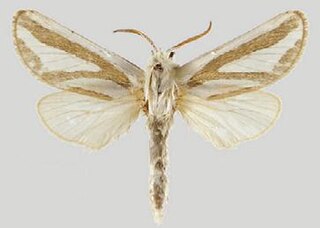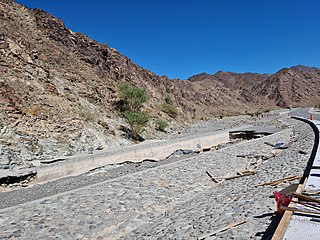
The sand partridge is a gamebird in the pheasant family Phasianidae of the order Galliformes, gallinaceous birds.

Blanford's fox is a small fox native to West Asia, Central Asia and parts of South Asia. It is listed as Least Concern on the IUCN Red List.

The Syrian brown bear is a medium-sized and endangered subspecies of Eurasian brown bear native to the Middle East and West-Central Asia, particularly around the Caucasus Mountains.

The Palestine sunbird is a small passerine bird of the sunbird family, Nectariniidae. Found in parts of the Middle East and sub-Saharan Africa, it is also known as the northern orange-tufted sunbird. However, the name "orange-tufted sunbird" refers to another species, found further south in Africa. In 2015, the Palestinian Authority adopted the species as a national bird, after losing in Israel's national bird public vote in 2008. The specific name osea is derived from Ancient Greek ὁσια.

Meharia is a genus of moths belonging to the family Cossidae.

Mormogystia proleuca is a species of moth in the family Cossidae. It is found in the southern part of the Arabian Peninsula, including southern Saudi Arabia, southern Oman (Dhofar) and Yemen.

Meharia hackeri is a moth in the family Cossidae. It is found in Socotra, Yemen.

Meharia yakovlevi is a moth in the family Cossidae. It is found in Socotra, Yemen.

Meharia acuta is a moth in the family Cossidae. It is found in Saudi Arabia, Oman and Yemen.
Meharia avicenna is a moth in the family Cossidae. It is found in Iran.
Meharia fischeri is a moth in the family Cossidae. It is found in Morocco.
Meharia incurvariella is a moth in the family Cossidae. It is found in Algeria, Morocco, Iran, Afghanistan and Pakistan.
Meharia philbyi is a moth in the family Cossidae. It is found in Saudi Arabia, Yemen and Oman.
Meharia scythica is a moth in the family Cossidae. It is found in Russia.
Meharia tancredii is a moth in the family Cossidae. It is found in northern Iran.
Meharia tanganyikae is a moth in the family Cossidae. It is found in eastern Africa.
The August 2012 Sinai attack occurred on 5 August 2012, when armed men ambushed an Egyptian military base in the Sinai Peninsula, killing 16 soldiers and stealing two armored cars, which they used to infiltrate into Israel. The attackers broke through the Kerem Shalom border crossing to Israel, where one of the vehicles exploded. They then engaged in a firefight with soldiers of the Israel Defense Forces (IDF), during which six of the attackers were killed. No Israelis were injured.
Deserticossus arenicola is a species of moth of the family Cossidae. It is found in Russia (Dagestan), Armenia, Azerbaijan, Georgia, Turkmenistan, Kazakhstan, Uzbekistan, Kyrgyzstan, north-western China, Iran, Afghanistan, Pakistan, Egypt (Sinai) and Jordan.
Holcocerus gloriosus is a species of moth of the family Cossidae. It is found in Turkmenistan, Uzbekistan, southern Kazakhstan, Iran, Afghanistan, Iraq, Jordan, Israel, northern Egypt, Saudi Arabia, Bahrain and Oman. The habitat consists of deserts.

Wadi Esfai is a seasonal watercourse in the Hajar Mountains of Ras Al Khaimah, United Arab Emirates. It runs from the village of Sifuni on the Mleiha to Fujairah highway (E84) to join Wadi Shawkah south of the village of Esfai.








